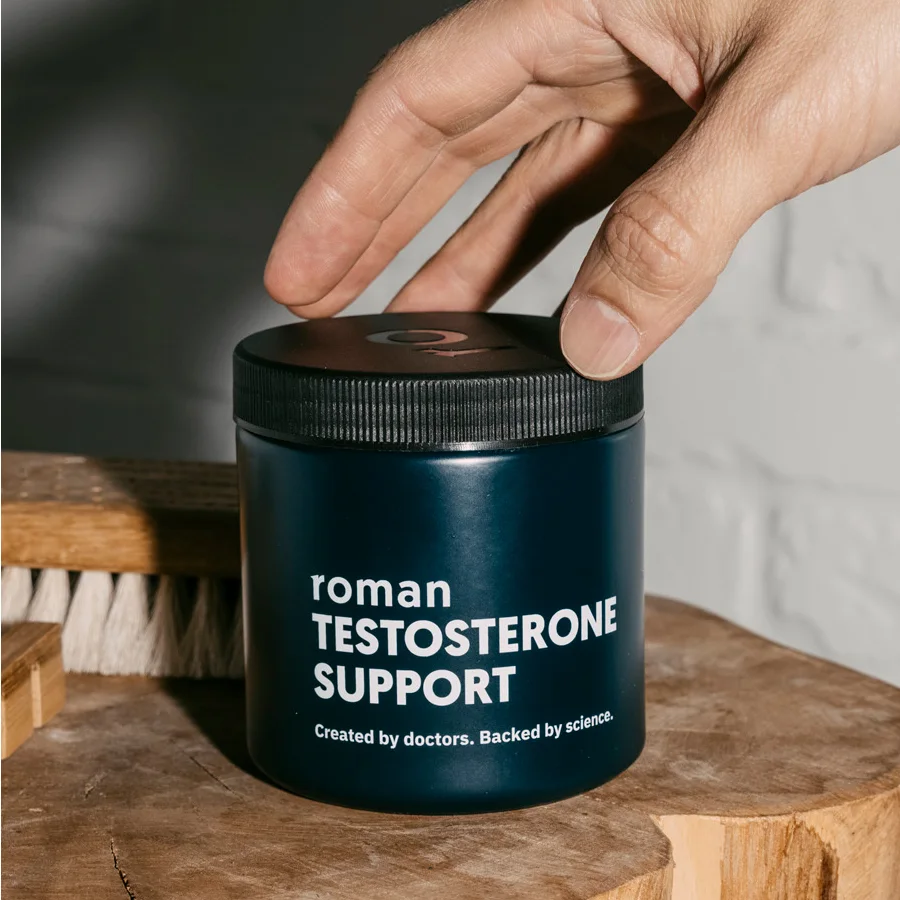Here's what we'll cover
Here's what we'll cover
Here's what we'll cover
If you have low testosterone (“low T”), you may have read about a prescription drug called Clomid (generic name: clomiphene or clomiphene citrate). Or maybe your healthcare provider has recommended Clomid for you, but you’re still weighing the risks and benefits.
Read on to learn more about Clomid for low testosterone, how it works, its side effects, and what to expect from treatment.
What is Clomid?
Clomid, also known as clomiphene citrate or simply clomiphene, is a prescription medication that belongs to a class of drugs called selective estrogen receptor modulators or SERMs (Mbi Feh, 2022).
Clomiphene was initially developed to treat certain types of infertility in women and was approved by the Food and Drug Administration (FDA) for this purpose in 1967 (Yilmaz, 2018). It works by boosting estrogen levels, which increases ovulation, triggering the release of an egg from the ovary.
Healthcare providers also prescribe Clomid off-label for hypogonadism in men, a condition that involves low levels of sperm, testosterone, or both. Symptoms of low T often include low sex drive, loss of muscle mass, infertility, and depression.
Clomid raises testosterone levels and increases sperm production and motility (Puia, 2022; Mbi Feh, 2022). Unlike testosterone replacement therapy (TRT), one of the main benefits of Clomid for low T is that clomiphene does not interfere with sperm production—which is critical for men who want to preserve their fertility (Wheeler, 2019).
How much will Clomid raise testosterone?
Clomid has been shown to raise T levels effectively. In one small study involving 22 men with infertility, a daily dose of 25 mg of clomiphene significantly increased testosterone levels—by 99.2% on average (Liao, 2022). Another study in men with low T (less than 300 ng/dL) who received a daily dose of 25 mg clomiphene also showed significantly higher T levels after 4–6 weeks of treatment (Shabsigh, 2005).
Your healthcare provider will check your T levels periodically during clomiphene treatment to ensure your levels stay within a healthy range.
How does Clomid work to raise testosterone?
Clomid can increase testosterone through a unique mechanism of action. It tricks your body into thinking that your sex hormone levels (estrogen or testosterone) are lower than they are. This triggers the pituitary gland in your brain to release more follicle-stimulating hormone (FSH) and luteinizing hormone (LH). This increase in FSH and LH leads to higher levels of testosterone. In males, clomiphene helps to increase the natural production of testosterone and sperm in the testes (Mbi Feh, 2022).
How long does it take for Clomid to increase testosterone?
How long Clomid takes to work and bring your T levels back to normal may depend on how low your T levels are. After age 30, T levels start to decline naturally with age. Testosterone is considered too low if the T level in your blood is less than 300 ng/dL. That’s considered a “reasonable cut-off”, according to the American Urological Association (AUA) (Mulhall, 2018). At this low level, you may have symptoms of low libido, erectile dysfunction (ED), fatigue, mood changes, difficulty maintaining muscle mass, and trouble sleeping. However, healthcare providers might still treat someone with slightly higher T levels if the signs and symptoms are typical of low T.
The normal T level in young men is typically between 600 and 900 ng/d, while older men have normal levels between 500 and 800 ng/dL (Sizar, 2022). So, the amount of time it takes to reach normal levels depends on your age, how low your T level is when you start taking Clomid, and the dose your healthcare provider prescribes.
For example, in one study that included men with T levels of less than 300 ng/dL, it took 1–2 months of treatment with 25 mg of Clomid per day for their T levels to return to normal range (Shabsigh, 2005).
Does Clomid improve the symptoms of low T?
As testosterone levels rise, you should notice some low T symptoms subsiding. Remember that Clomid doesn’t raise your testosterone levels overnight, and it may take 2–3 months to see symptom relief. This can include increased sex drive, better energy levels, improved mood, and more.
A clinical study looked at men with low T and ED who took clomiphene treatment for four months. The researchers found that sexual function improved in 75% of the men, and testosterone levels significantly increased in all of the men. However, not everyone responded that well to the treatment. The researchers observed that men with diabetes, high blood pressure, and coronary artery disease, and those who took multiple medications didn’t respond as well (Guay, 2003).
Another review on the long-term safety and efficacy of clomiphene for low testosterone treatment showed that almost 90% of men on clomiphene citrate for more than 3 years achieved normal testosterone levels, and 77% reported improved symptoms (Krzastek, 2019).
However, other factors may influence how well your body responds to clomiphene treatment, and some men may achieve increased testosterone levels but without adequate symptom relief. The reasons for this are not always fully understood.
Clomid side effects in men
Clomid is typically well-tolerated, and severe side effects are rare. Long-term studies have confirmed the overall safety of Clomid. Common side effects of Clomid in men include (Krzastek, 2019):
Changes in mood: A small number (8%) of men who took clomiphene for an extended period have reported mood changes.
Blurry vision
Sore breast tissue
Men may prefer Clomid as an alternative to testosterone replacement therapy because of its relatively mild side effects. Testosterone replacement therapy (TRT), such as testosterone injections, pellets, topical gels, and patches, has a less favorable list of potential adverse effects. It also often shuts down your body’s natural testosterone production, which may cause testicular atrophy, low sperm production, and infertility (Patel, 2019).
Talk to your healthcare provider if you have questions about the risks and benefits of clomiphene therapy or to find out if it could help your low T.
DISCLAIMER
If you have any medical questions or concerns, please talk to your healthcare provider. The articles on Health Guide are underpinned by peer-reviewed research and information drawn from medical societies and governmental agencies. However, they are not a substitute for professional medical advice, diagnosis, or treatment.
References
Guay, A. T., Jacobson, J., Perez, J. B., et al. (2003). Clomiphene increases free testosterone levels in men with both secondary hypogonadism and erectile dysfunction: who does and does not benefit? International Journal of Impotence Research , 15 (3), 156–165. doi:10.1038/sj.ijir.3900981 Retrieved from https://www.nature.com/articles/3900981
Krzastek, S. C., Sharma, D., Abdullah, N., et al. (2019). Long-term safety and efficacy of clomiphene citrate for the treatment of hypogonadism. The Journal of Urology, 202 (5), 1029–1035. doi:10.1097/JU.0000000000000396. Retrieved from https://pubmed.ncbi.nlm.nih.gov/31216250/
Liao, Y., Chang, Y. K., Wang, S. M., & Chang, H. C. (2022). Ceiling effect of clomiphene citrate on the testosterone to estradiol ratio in eugonadal infertile men. PloS One , 17 (1), e0262924. doi:10.1371/journal.pone.0262924 Retrieved from https://www.ncbi.nlm.nih.gov/pmc/articles/PMC8803167/
Mbi Feh, M. K. & Wadhwa, R. (2022). Clomiphene. StatPearls . Retrieved on Sept. 22, 2022 from https://www.ncbi.nlm.nih.gov/books/NBK559292/
Mulhall, J. P., Trost, L. W., Brannigan, R. E., et al. (2018). Evaluation and management of testosterone deficiency: AUA Guideline. Journal of Urology, 200 (2), 423-432. doi: 10.1016/j.juro.2018.03.115. Retrieved from https://pubmed.ncbi.nlm.nih.gov/29601923/
Patel, A. S., Leong, J. Y., Ramos, L., & Ramasamy, R. (2019). Testosterone is a contraceptive and should not be used in men who desire fertility. The World Journal of Men’s Health , 37 (1), 45–54. doi:10.5534/wjmh.180036. Retrieved from https://www.ncbi.nlm.nih.gov/pmc/articles/PMC6305868/
Puia, D. & Pricop, C. (2022). Effectiveness of clomiphene citrate for improving sperm concentration: A literature review and meta-analysis. Cureus , 14 (5), e25093. doi:10.7759/cureus.25093. Retrieved from https://www.ncbi.nlm.nih.gov/pmc/articles/PMC9204291/
Shabsigh, A., Kang, Y., Shabsign, R., et al. (2005) Clomiphene citrate effects on testosterone/estrogen ratio in male hypogonadism. Journal of Sexual Medicine, 2 (5), 716–721 . doi:10.1111/j.1743-6109.2005.00075. Retrieved from https://pubmed.ncbi.nlm.nih.gov/16422830/
Sizar, O. & Schwartz, J. (2022). Hypogonadism. StatPearls . Retrieved on Sept. 22, 2022 from https://www.ncbi.nlm.nih.gov/books/NBK532933/
Wheeler, K. M., Sharma, D., Kavoussi, P. K., et al. (2019). Clomiphene citrate for the treatment of hypogonadism. Sexual Medicine Review, 7 (2), 272-276. doi: 10.1016/j.sxmr.2018.10.001. Retrieved from https://pubmed.ncbi.nlm.nih.gov/30522888/
Yilmaz, S., Yilmaz Sezer, N., Gönenç, İ. M., et al. (2018). Safety of clomiphene citrate: a literature review. Cytotechnology , 70 (2), 489–495. doi:10.1007/s10616-017-0169-1 Retrieved from https://www.ncbi.nlm.nih.gov/pmc/articles/PMC5851961/










